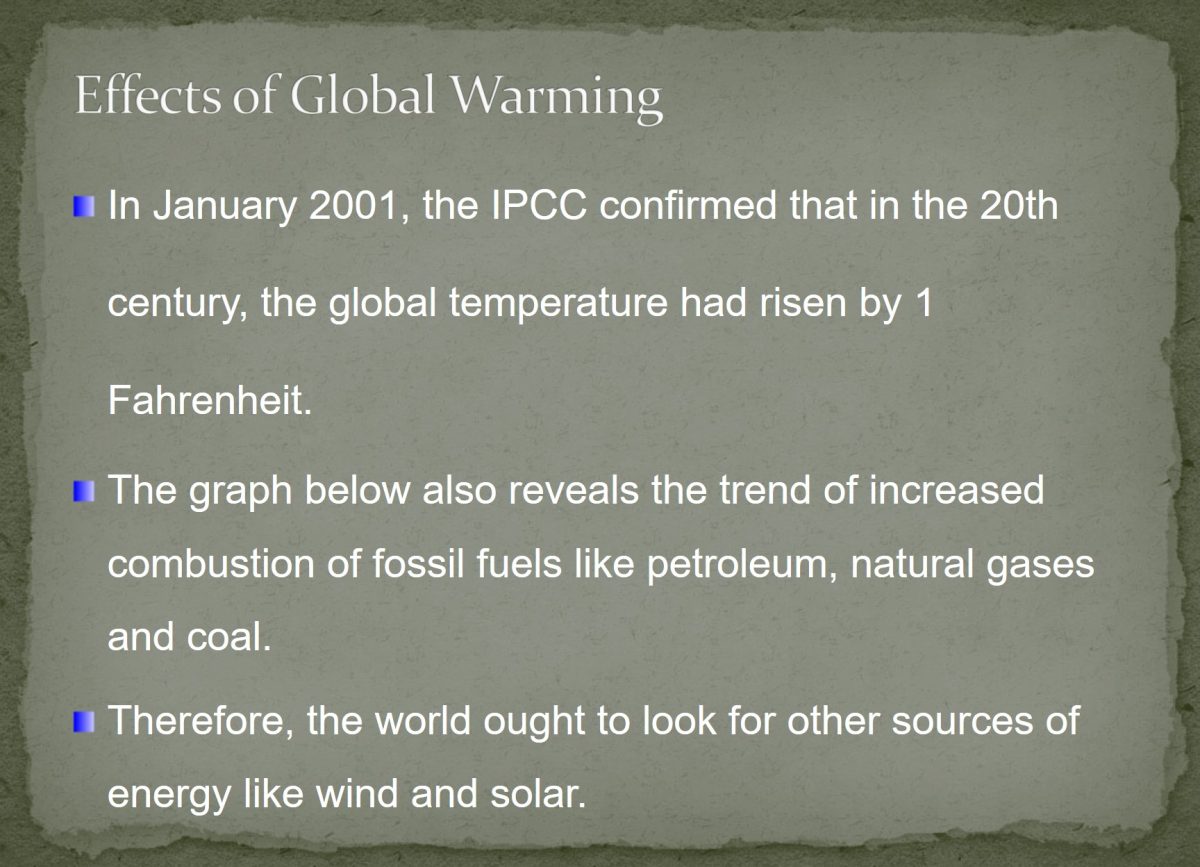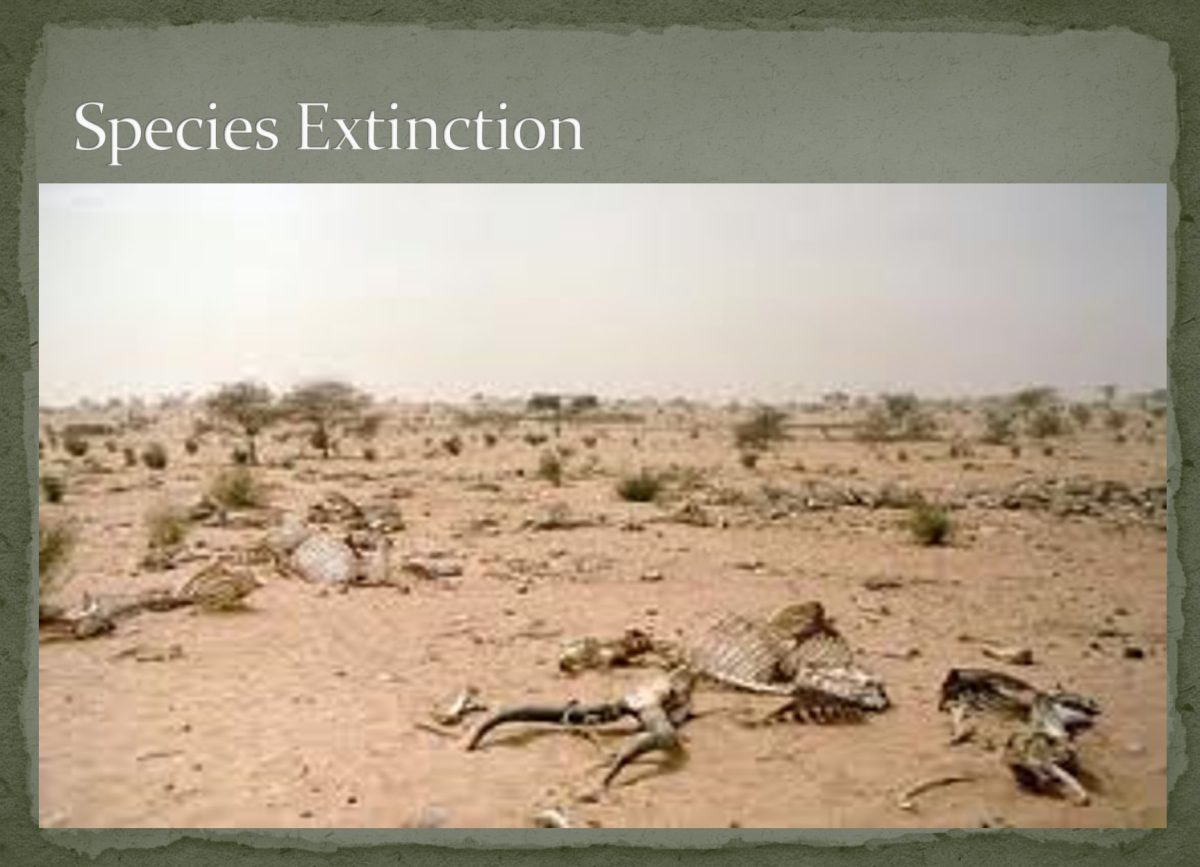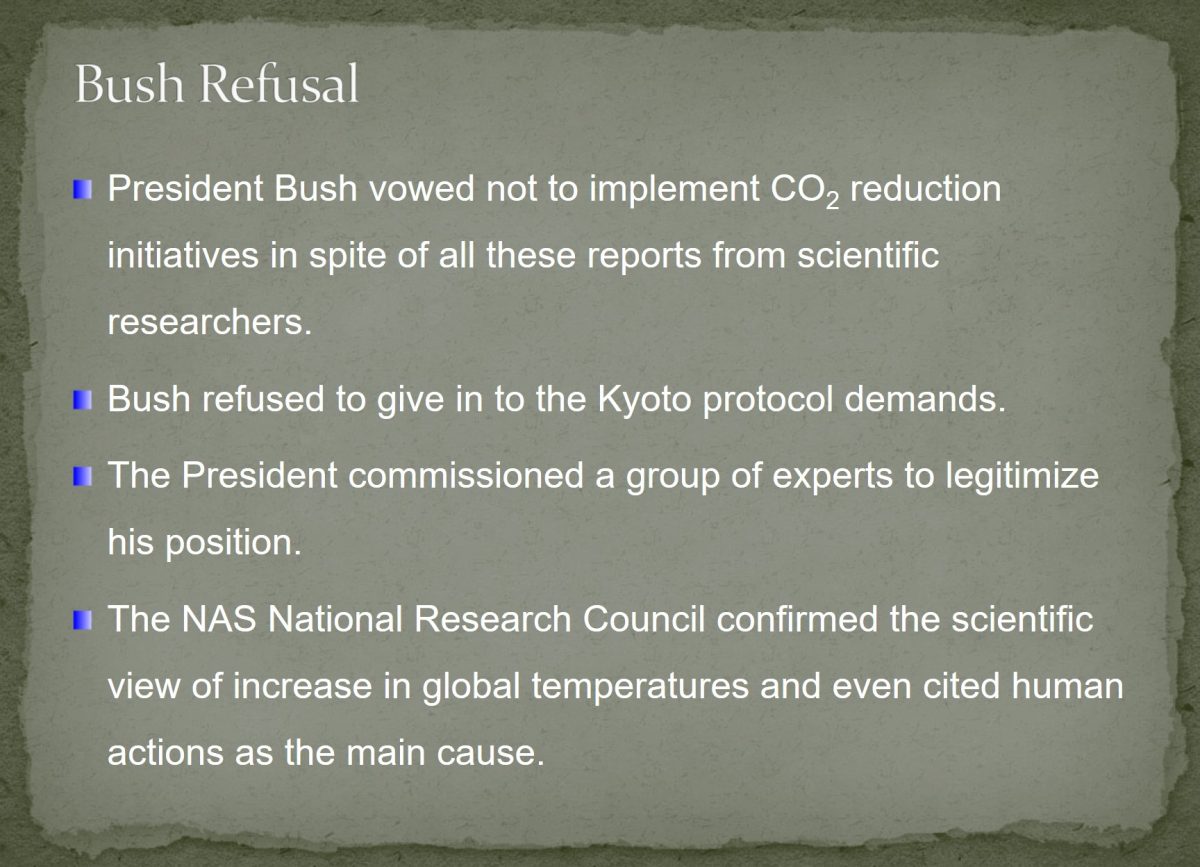Introduction
- Global warming had become a thorny issue by autumn of 1998.
- Different groups in the US embarked on a cost benefit analysis of reducing CO2 emissions.
- There were suspicions among countries on the reduction of global warming activities.
While the opponents of climate change argued that the steps towards reducing CO2 emissions as required by the Kyoto Protocol were so expensive, the Clinton’s administration had forged bilateral agreements with industrialized nations on how to limit CO2 emissions. Most nations felt reluctant to join the initiative citing a research by former IPCC chair Bert Bolin. He predicted that the level of CO2 in the atmosphere will continue to rise, from 370ppm in 1998 to 392ppm by 2010, however much the Kyoto commitments are fulfilled.

The Kyoto Protocol
The Kyoto Protocol requires industrialized countries to reduce their greenhouse gases emissions by 5.2% in comparison to 1990 as the benchmark year.
Other reports indicated the years 1998 and 1999 as the warmest, melting of ice at the North Pole during the summer and massive decrease in the thickness of polar ice to 5.9 feet in 1990s from 10.2 feet in the 1960s.
The fourth Conference of the Parties (COP) in Buenos Aires, in Argentina, saw US join over 150 nations in signing the Kyoto Protocol. US received massive opposition from European nations, India and China; they claimed that US was trying to buy its way out of reducing the emissions through international trading emissions. As this hullabaloo continued, reports disclosed early onset of spring and an increase in the growing season from the Mediterranean Sea to sub-Arctic by eleven days since 1970. These worrying trends called for the course of actions in reducing emissions.

The Hague Conference
- The Clinton’s administration had tried to get the support of their opponents before heading to the COP 6 meeting at The Hague in 2000.
- At the Hague conference, US insisted on the use of emission-trading mechanisms and credit for land-use practices.
- The Hague negotiations fell apart with no common agreement among the environmentalist movements themselves.
The administration warned of the consequences of climate change on the health and well-being of their citizens; therefore, justifying the need for urgent course of action. However, his critics cited the cost-effectiveness, the effect on the economy and efficiency as some of the drawbacks to the course of action. In this, they wanted to use forests and agricultural land management in meeting their greenhouse gas reduction level. This approach received unequivocal rejection from other nations who argued that there was no direct correlation between the role of soils and forest credits in minimizing CO2 emissions.

Effects of Global Warming
- In January 2001, the IPCC confirmed that in the 20th century, the global temperature had risen by 1 Fahrenheit.
- The graph below also reveals the trend of increased combustion of fossil fuels like petroleum, natural gases and coal.
- Therefore, the world ought to look for other sources of energy like wind and solar.
This change was noted to have been due to increased combustion of fossil fuels. The black line indicates massive release of CO2 in the atmosphere by all the fuels. Clearly, this trend calls for immediate actions to reduce carbon emissions to a level that was present before 1900. Notably, after 1950, the world reduced the limits of coal usage in energy production while this was a positive move, petroleum usage rose to a level much higher than before hence no alteration to the carbon emissions into the environment.


The IPCC Report
In February, another IPCC report outlined possible consequences of global warming, for example:
- Floods,
- Droughts,
- Cyclones,
- Species extinction.
The picture below is self explanatory on the effects of global warming hence the urgent need to reverse this process.
There were also constant changes in rainfall patterns thus resulting to pressure on available water sources. In addition, there were melting of equatorial glaciers in Peru and Africa, delayed freezing, early breakup of lake ice, notable circulation of warm water in the North Atlantic and massive reduction in Greenland and West Antarctic sheets. The constant droughts were also seen as means of adding CO2 into the atmosphere that is northern soils could release CO2 into the air. Droughts lead to death of fauna and flora since they mostly depend on adequate rainfall patterns.


Bush Refusal
- President Bush vowed not to implement CO2 reduction initiatives in spite of all these reports from scientific researchers.
- Bush refused to give in to the Kyoto protocol demands.
- The President commissioned a group of experts to legitimize his position.
- The NAS National Research Council confirmed the scientific view of increase in global temperatures and even cited human actions as the main cause.
Bush held that scientists should do more research on climate change. At this time, CO2 concentration levels in Loa had reached 368ppm. The incomplete scientific research as he claimed could harm consumers; this was a total violation of his campaign pledge. His refusal to cooperate with Kyoto members prompted European nations to continue reducing emissions without involving the US. Even with these findings, Bush persistently continued to oppose the Kyoto Protocol. Markedly, the US President and his Vice President Dick Chimney had a lot of investments in the oil industry and such actions could reduce the profit levels of their firms.

Research Findings
- In 2002, Bush committed $4.6 billion over five years to encourage firms to reduce carbon intensity of the economy by 18% in the next ten years.
- Continued research revealed the main cause of the rise in global temperatures as human activities.
- A report in Nature, in 2003, disclosed that global warming was the cause for species extinction and biodiversity thus disrupting the eco-system.
- Scientists discovered that, currently, trees grow and die faster than 20 years earlier.
- The Bush administration still viewed the effects of global warming as unsubstantiated threats that had little effect on the economy.
- In February 2005, the Kyoto Protocol went into action after Russia’s ramification in late 2004.
Carbon intensity is the ratio of greenhouse gases like CO2 to the GDP of a country. This administration’s step attracted little support from environmentalists like Eileen Claussen and Myron Ebell. In the Polar Regions, ice was melting and flowing into sea water more rapidly than scientists had anticipated. There were also sharp retreats of glaciers, increased precipitation and thawing of permafrost. The above picture showing death of animals and plants attests this claim. The rapid rise in global temperatures disturbed scientist, and they are frightened on what might happen in the next 100 years.
The alteration in trees’ lifespan led to a study on possible sink avenues for the excess CO2. The increase in temperatures went hand in hand with the increase in CO2 concentrations in the atmosphere. Notably, in 2004 at the COP 10 meeting, the US delegation were of the opinion that science has not shown a level that one can view as of great danger; therefore, they are not aware of what level of emissions to avoid. The Protocol’s commitment was to reduce CO2 emissions by 8% in 2012, below the 1990 levels. So serious was this issue that individual states in US defied the federal government’s position and started initiatives to cut CO2 output.


Mitigation Measures
Major cities and companies in the US adopted the terms spelt out in the Kyoto Protocol. For example,
- They set up reduction targets for greenhouse gas,
- Improved energy efficiency,
- Improved waste management,
- Increased production and use of renewable energy sources.
These companies believed in benefiting from their actions. BP, for instance, reduced emissions by 10% and made a saving of $65 million over three years through designing an internal carbon-trading strategy. Later, in 2007, US refused to give in to the idea of setting emission limits and Bush went ahead to violate EPA’s assertions on limiting emissions of greenhouse gases.

Conclusion
Global warming had become a global issue with most US residents accepting that radical measures should be taken to avert the impeding consequences.
Currently, global warming remains a serious threat.
Industrialized countries like US and China should be at the forefront in limiting greenhouse gases emissions into the atmosphere. Therefore, global warming control requires an inclusive approach.
